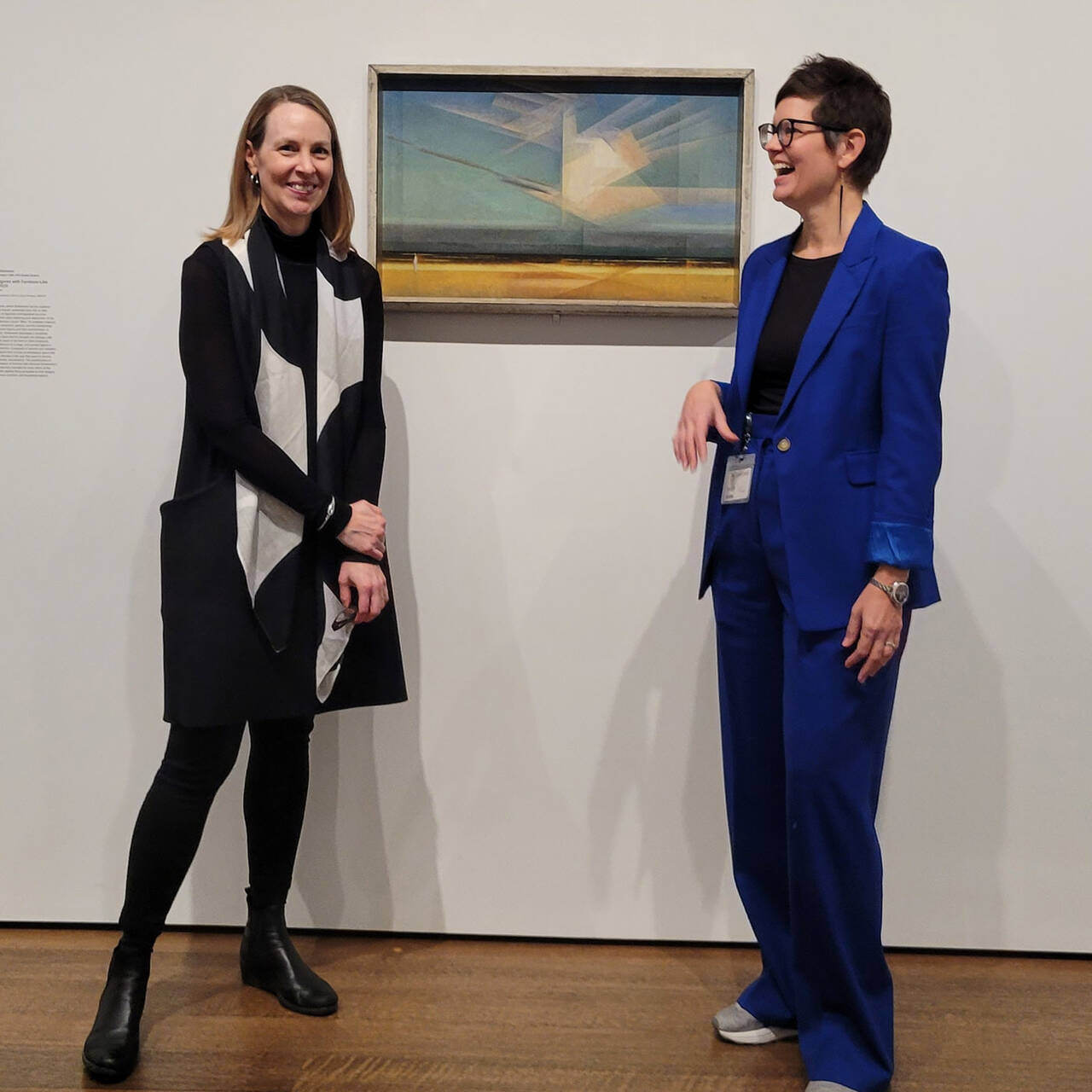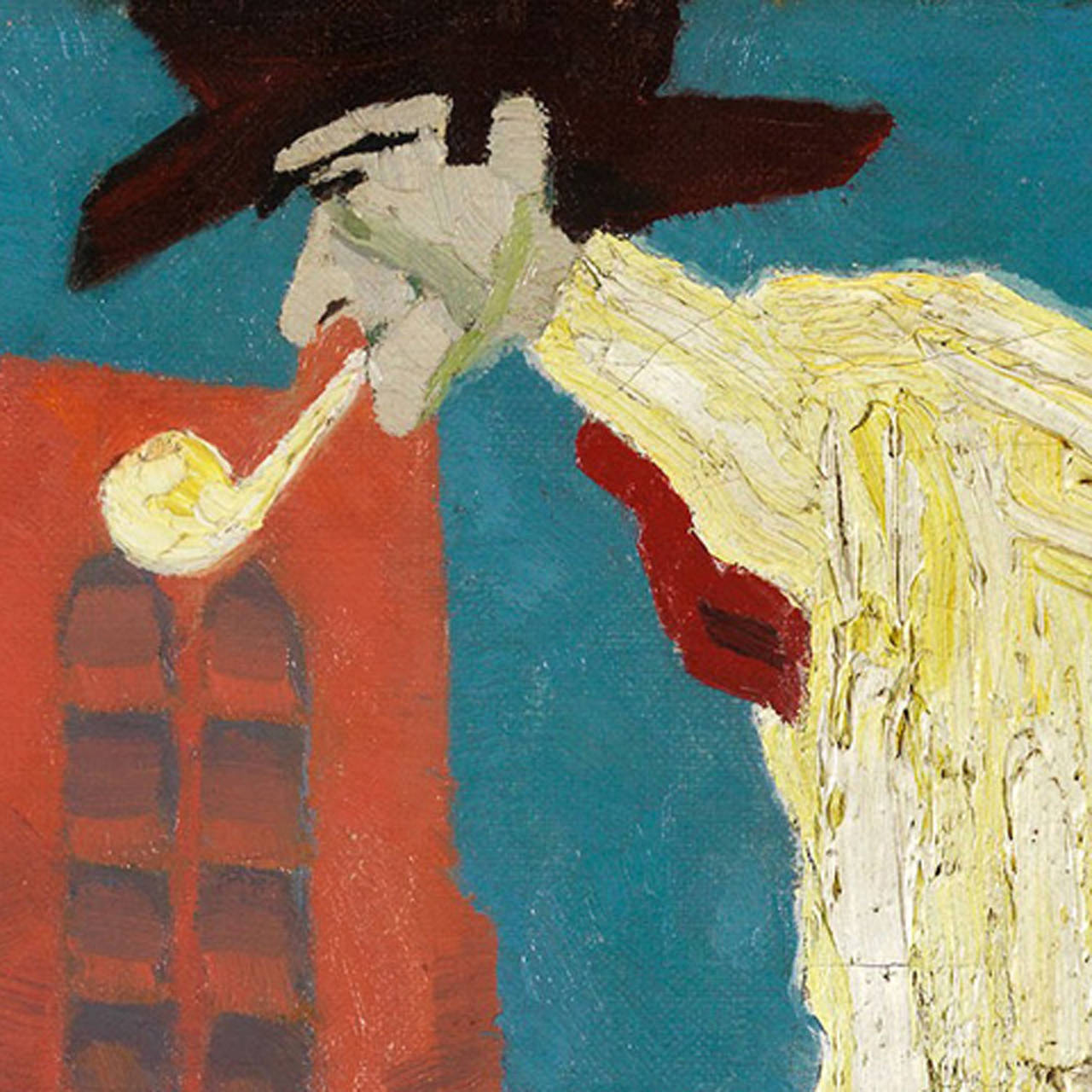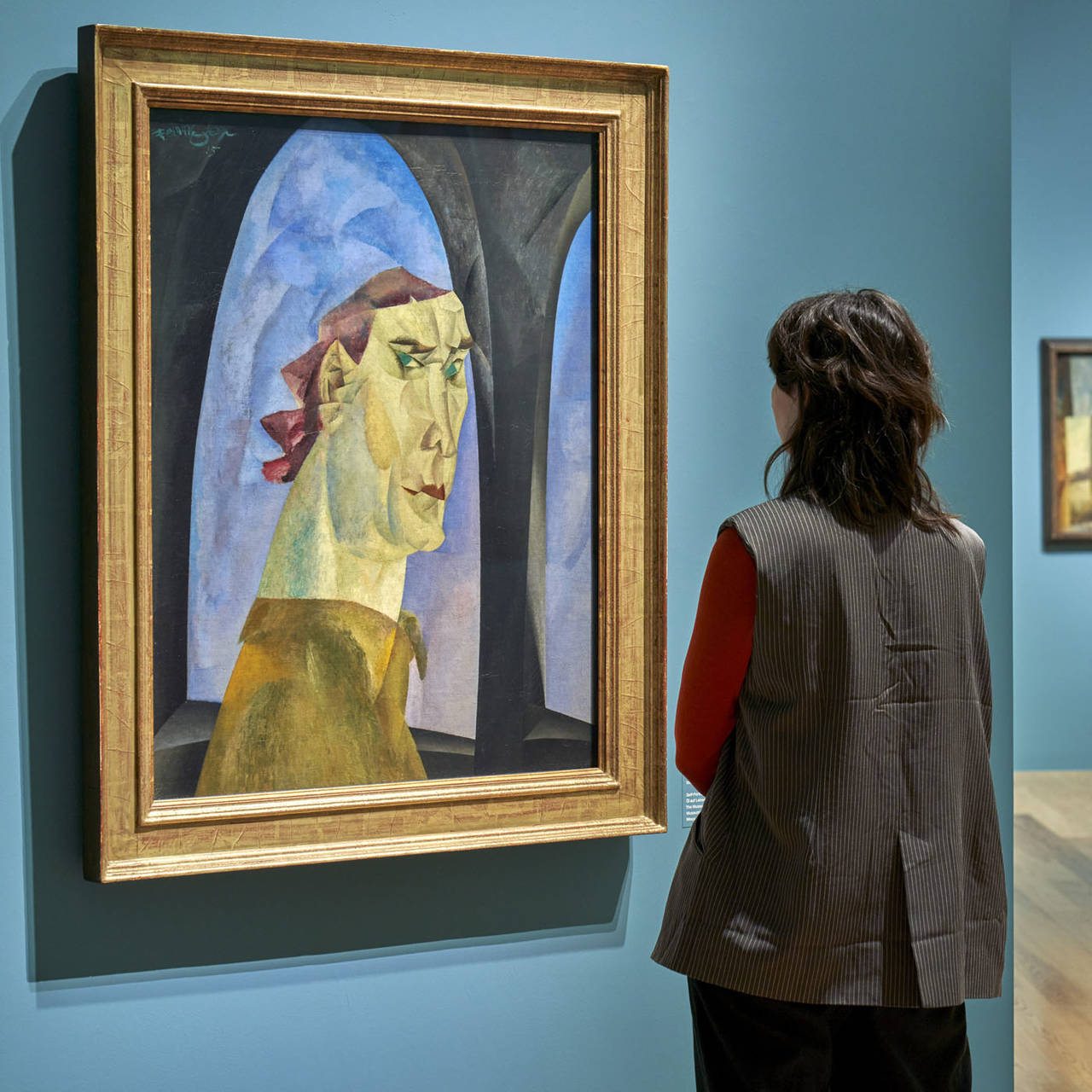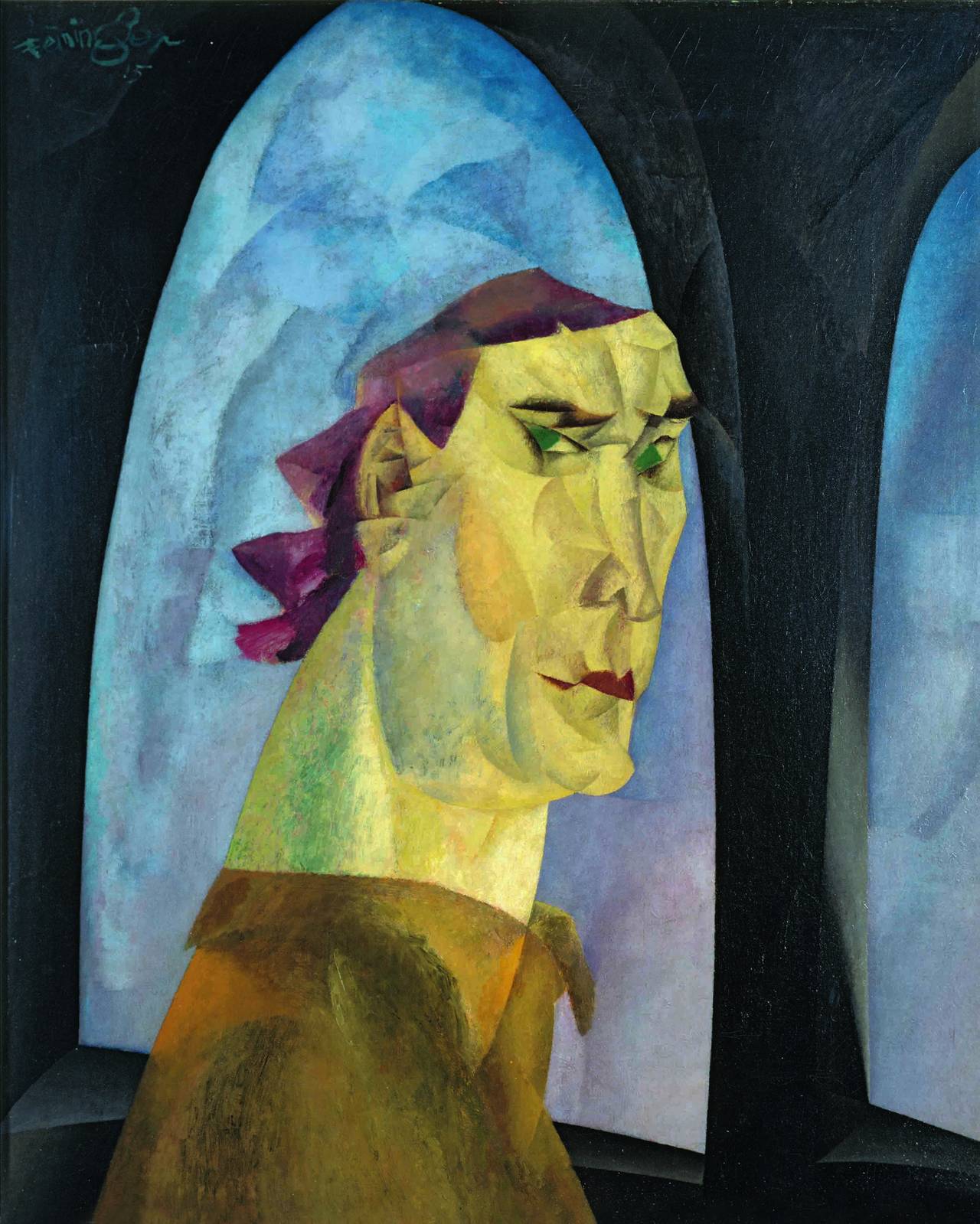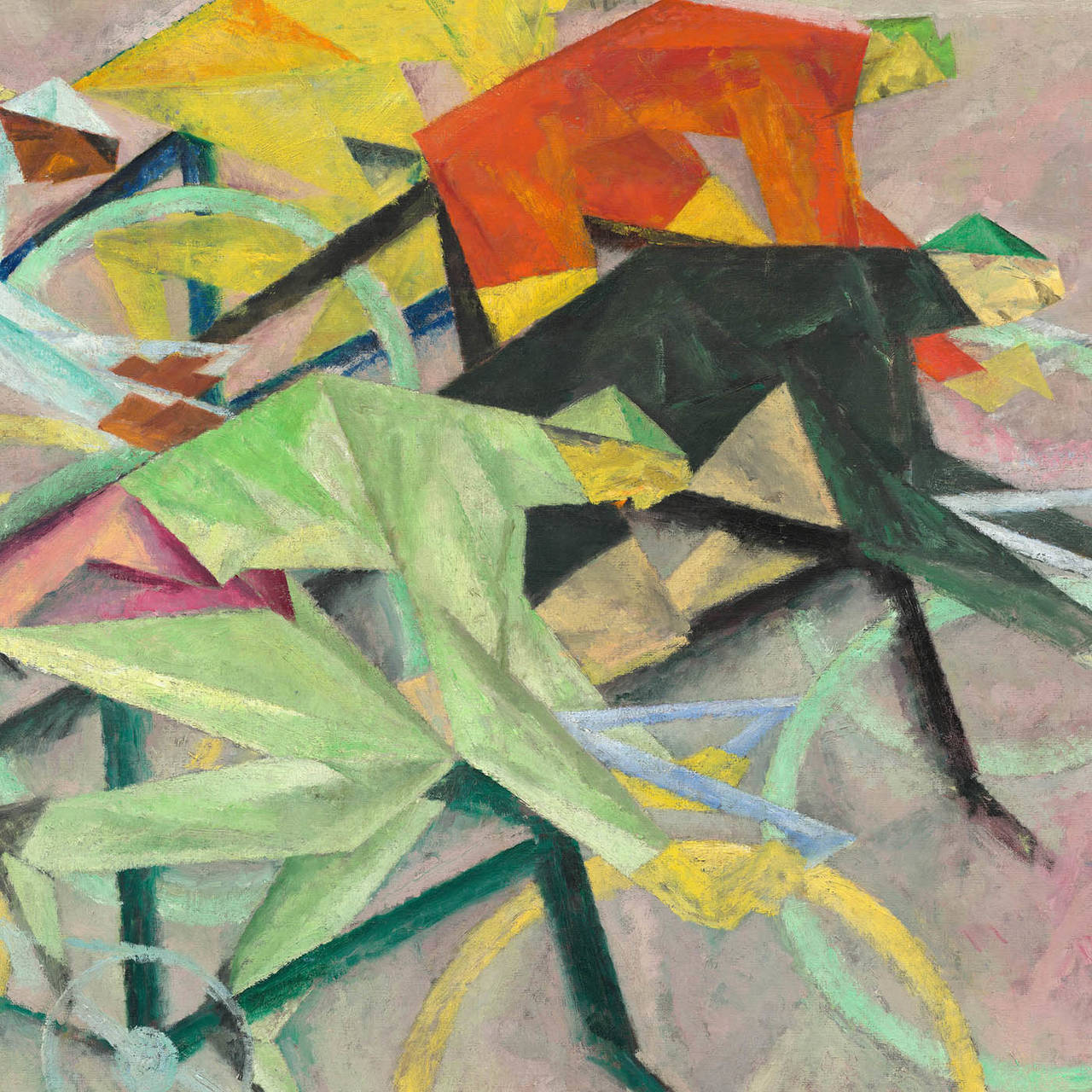Art historians can tell us a lot about LYONEL FEININGER, but who was Julia Feininger and what legacy did she bequeath to the world of art?
Lyonel Feininger’s career as an artist is almost inconceivable without Julia Feininger, his companion, wife, and kindred spirit. At the beginning of their partnership, Julia was herself still active as an artist and she encouraged Lyonel to experiment with new media such as lithography or oil painting, and, in the final analysis, herself became a past master in these fields. While he became ever more successful, she gradually withdrew from active art practice. So, who was Julia Feininger and what legacy did she bequeath to the world of art?
Artistic training and first marriage
Today, not much is known about the oeuvre of the former artist; a few works are scattered across collections, such as the Klassik Stiftung housed in the Bauhaus Archive in Weimar, but most of the pieces are now only known through photographs that Lyonel Feininger took. It is thus hardly surprising that there are only a few scholars who have researched her career as an artist, whereby special mention should be made of art historian Lina Assmann and of Gloria Köpnick, the former director of the Lyonel Feininger Galerie in Quedlinburg.
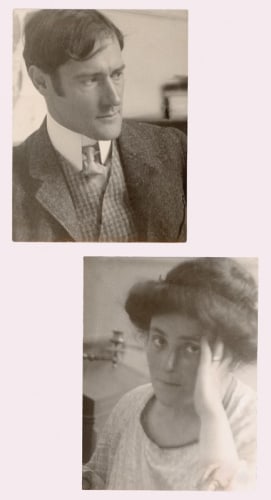
Portraits of Lyonel and Julia Feininger, ca. 1906, Image via moellerfineart.com
Julia was born Julia Lilienfeld on Nov. 23, 1880, in Berlin, the daughter of Bernhard Lilienfeld and his wife Jeanette Zuntz, and thus into a prosperous Jewish merchant family. At the age of 15 she graduated from Senior Girl’s School and from 1896 to 1900 completed artistic training at the ‘Studio for Ladies” run by Adolf Meyer. Until well into the following year, she also took classes at the “Verein der Künstlerinnen und Kunstfreundinnen”, an association that supported up-and-coming female artists and enabled them to attend drawing classes at an academic level. She studied drawing nudes under Symbolist Martin Brandenburg.
Only a little later her career as an artist came to a halt: In 1903, she married physician Walter Berg. We can assume that during this marriage Julia Berg abandoned her artistic practice and mainly dedicated herself to domestic duties. Her life changed drastically in 1905 whenby pure chance while traveling by train to Graal on the Baltic coast she met Lyonel Feininger, nine years her senior. It was a fateful encounter and only a little later Julia Berg separated from her then husband. Such a move was very much an exception in the early 20th century and from today’s perspective seems to have been highly progressive and courageous.

Lucia Moholy: Julia Feininger, 1926, Image via artic.edu
Twixt love and self-expression
Her acquaintanceship with Lyonel Feininger inspired Julia Berg to return to working as an artist. From the beginning Feininger gave her intellectual support and backed her decision to enroll to study painting at the Grand Ducal Saxon College of Art in Weimar under painter and printmaker Otto Rasch. Classes started on Oct. 20, 1905, and the budding artist relocated to Weimar. During her time at the college, Julia Berg concerned herself closely with lithography and drawing nudes, and experimented in painting. Testimony to this is her thoughtful portrait of her fellow student Susanne Hornbostel, painted in 1905-6. In other words, she produced the oil painting only shortly before Lyonel Feininger himself, in 1906, first tried his hand in the medium. At that time, Feininger was working professionally as a caricaturist, and only in his leisure time did he make the one or other drawing, his “Nature Notes” as he called them.
Regninief [Julia Berg], Beuglants [cabaret artists], 1908 [published in: Le Témoin 10, vol. 3, March 7, 1908, p. 11]. Bibliothèque nationale de France, département Littérature et art, FOL-Z-1020.Image via gallica.bnf.fr
It is interesting to note that at the beginning of their relationship the couple formed a creative working partnership, signed drawings together, and supported each other in the process of self-expression. This mutual artistic influence and inspiration can be clearly seen precisely in Julia’s early years as an artist. Testimony to this is the study of a tree stump dating from 1905, which is signed by both with the words “Berg und Feininger”, as is the correspondence between the two artists in which they discuss technical issues and the challenges in depicting trees. At the same time, as Dietlinde Hamburger emphasized last year in her “Findetage – Ritbnitz im Leben und Werk von Lyonel Feininger”, the tree was symbolic of Julia Berg’s development as an artist as she herself wrote in a letter to Lyonel Feininger dated Oct. 6, 1905: “(…) but no, I was pruned and tied and grafted and was meant to be a tree quite different from the one I was by nature. Yes, and what did that lead to? The gardener is now complaining about the tree gone wild.” These lines suggest that Julia’s artistic practice suffered under the domestic life of her first marriage and only flourished again after meeting Lyonel Feininger.
“(…) but no, I was pruned and tied and grafted and was meant to be a tree quite different from the one I was by nature. Yes, and what did that lead to? The gardener is now complaining about the tree gone wild.
In 1906, the couple moved to Paris, where they took drawing classes together at the Académie Colarossi. During this time, Lyonel Feininger continued to publish his caricatures, for example in the satirical magazine “Le Témoin”. The creative interaction and mutual influences led to Julia Berg likewise starting to produce caricatures, and from the end of 1907 until May 1908 she herself published several caricatures in “Le Témoin” under the name “Regningief”, an ananym on Feininger. These caricatures clearly attest to Julia Berg’s feel for pictorial composition and colors. Her caricature entitled “Pénible Nécessité – Je suis en retard d’une heure et démie, il va falloir que je lui fasse une scene”, realized completely in red, black, and white, shows how playfully and wittily she contrasts the women in the foreground who have come late and the two men in the background. Nevertheless, the positive influence that Julia Berg had on Lyonel Feininger was of equally great importance: During their stay in Paris, she strongly encouraged her partner to try his hand at painting and thus essentially tolled the bell ending her own career. Shortly after their trip to Paris, the couple married in 1908 and subsequently Julia gave birth to three sons, who for their part also chose artistic professions.
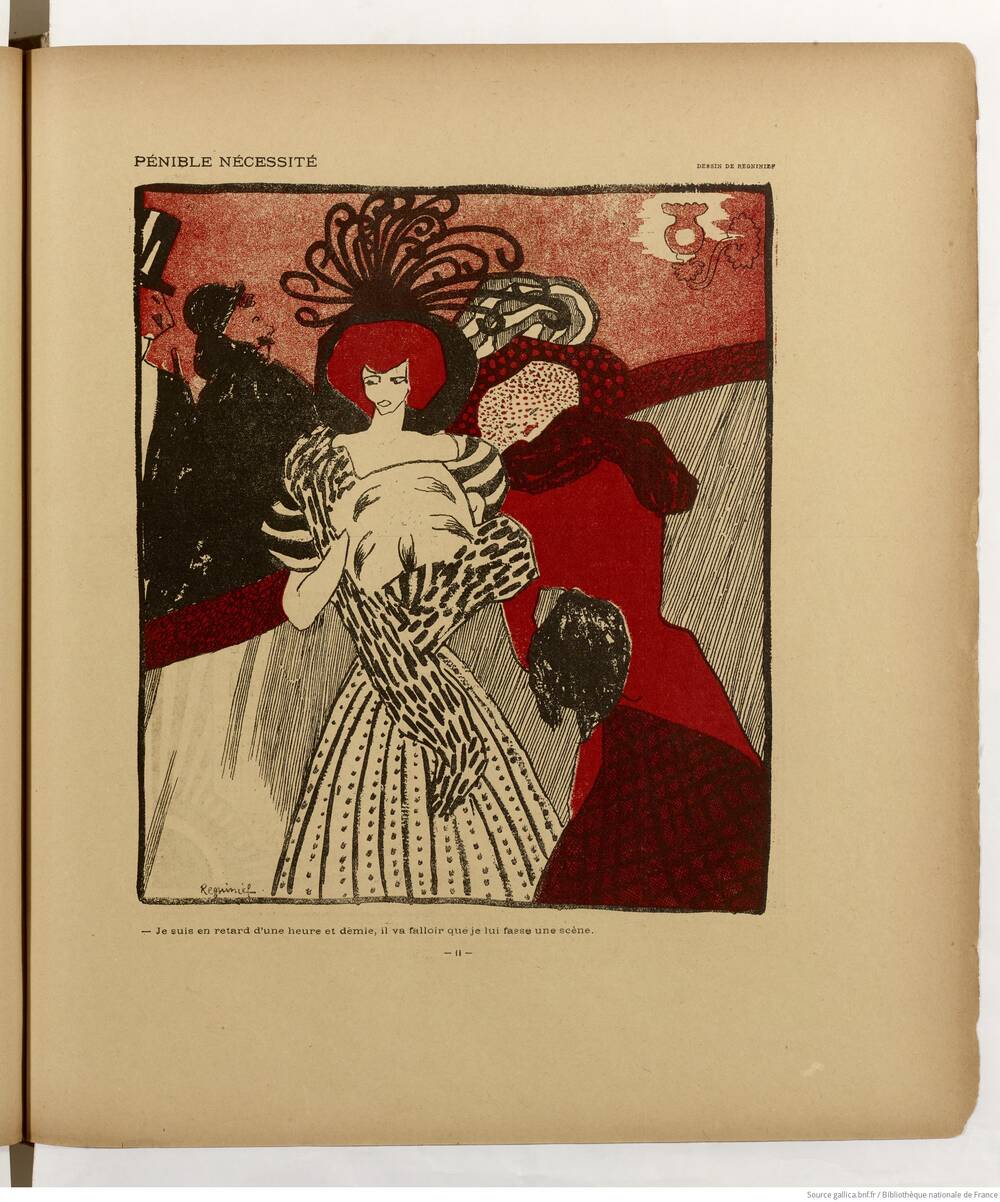
From taking a break for the family to managing a life’s work
Although Lyonel Feininger always supported her wife in resuming her artistic work, it was not until 1912 that she exhibited ten pieces as part of the “Ausstellung moderner geschnittener Silhouetten” in the Hohenzollern Kunstgewerbehaus in Berlin.
When the Feiningers moved to the Bauhaus in Weimar, in 1919, Julia Feininger took part in both social and student life, and seized the opportunity to experiment with new materials. She created not only ceramic works in the pottery workshop, but also enrolled in her husband’s Nature class and evening classes in nude drawing and was thereafter officially accepted as a full-time student at the Bauhaus. Today, some of these ceramic pieces are in private collections. Julia Feininger also designed puppets (including a prince and princess, a vizir, a magician, and other figures) for “Tales of 1,001 Nights”; the play was, however, never performed. As Lyonel Feininger became ever more successful and his artistic career gained momentum, Julia Feininger increasingly acted behind the scenes. Like so many other female artists of her day, she uncompromisingly waived her own artistic ambitions and instead assumed the role of supporter, promoter, and intermediary for her husband’s output. Just how much the couple needed each other, acted as equals, and indeed how strong Julia’s influence on Lyonel’s outlook and art was can be gleaned from many of his published letters to Julia.
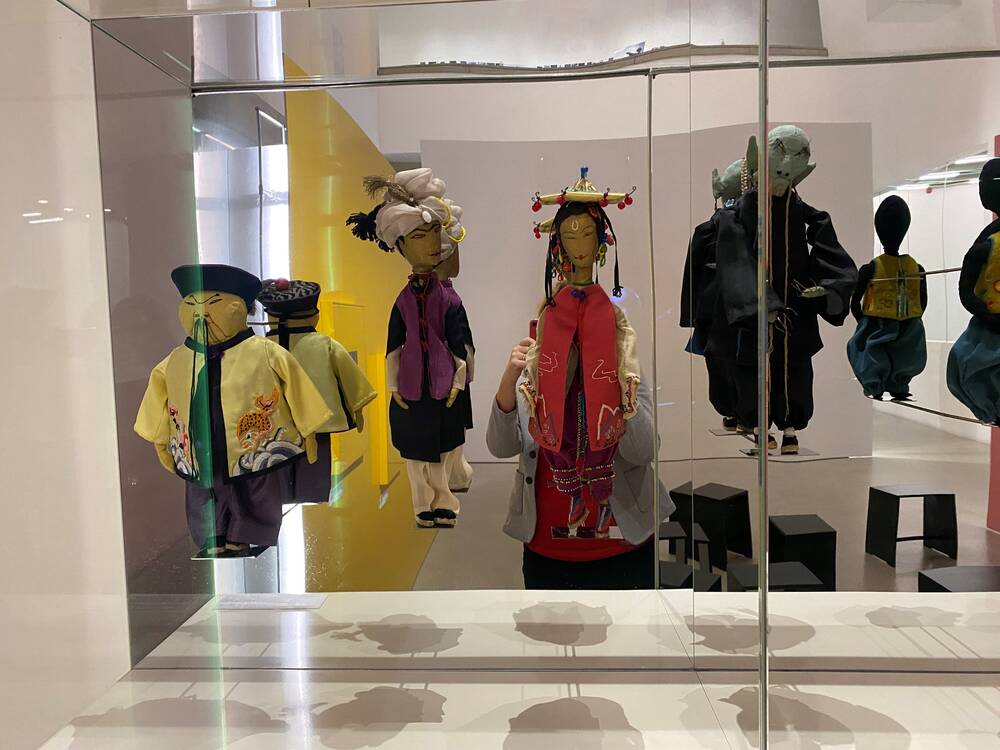
After Lyonel Feininger’s death in 1956 in New York, Julia Feininger took on the task of preserving his oeuvre. She worked together with Hans Hess to complete a catalog raisonné of his paintings, translated letters, and championed exhibition projects and the foundation of the Feininger Archive at Harvard University. The legacy she bequeathed to art history thus included not only her own oeuvre but also that of her husband, which takes the form of the Lyonel Feininger Collection at the Harvard Art Museum and brings joy to the hearts of art lovers the world over in the form of works loaned out for exhibitions.
LYONEL FEININGER: RETROSPECTIVE
October 27, 2023 – February 18, 2024

